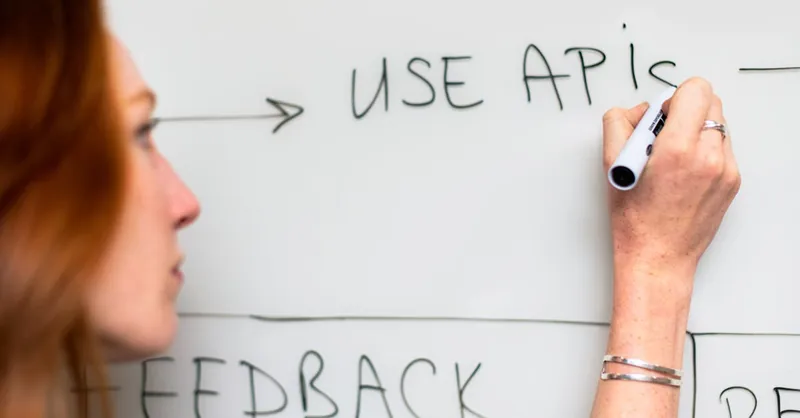Getting Started with React & Django REST API: A Practical Guide
Category: Django
Unlock the Power of React with Django REST API
Are you an aspiring or intermediate web developer eager to build modern, dynamic web applications using React and Django REST Framework? You've landed in the right place. Many developers know how to create backend APIs with Django but struggle with integrating those APIs into responsive frontends like React. Conversely, front-end devs might feel overwhelmed setting up a reliable backend that talks fluently with their React apps. This guide is crafted specifically for developers who want clear, practical steps to bridge React and Django REST API seamlessly. We’ll walk through setting up a Django backend that serves RESTful endpoints, then connect that backend to a React frontend using best practices. Unlike high-level overviews or deeply technical docs, this post focuses on actionable, straightforward instructions that save you time and frustration. Whether you’re aiming to build your first full-stack app or improve your existing workflow, our step-by-step coverage ensures you understand not just the how, but the why. With concise code examples and explanations, you’ll gain the confidence to set up your development environment, build API endpoints, and fetch data on your React UI effortlessly. Keep reading to unlock practical insights that help you master React and Django REST together, empowering you to create scalable web applications faster.
- Unlock the Power of React with Django REST API
- Setting Up Your Development Environment: Installing Python, Django, Django REST Framework, Node.js, and React CLI
- Creating a Django Project and REST API
- Designing Models and Serializers: Defining Django Models for Your Data and Creating Serializers for JSON APIs
- Implementing API Views and Routing: Building API Views Using Django REST Framework
- Handling Authentication and Permissions: Securing Your Django REST API with Token-Based Authentication
- Initializing a React Project: Bootstrapping with Create React App and Essential Libraries
- Fetching and Displaying API Data in React: Handling Loading States and Rendering Lists
- Managing State and React Router Integration: Using React Hooks and Setting Up SPA Navigation
- Handling Forms and Sending Data to API: Creating Controlled React Forms and Posting to Django REST API
- Deploying Your React and Django Application
Setting Up Your Development Environment: Installing Python, Django, Django REST Framework, Node.js, and React CLI
Before diving into building your React frontend and Django REST API backend, it's crucial to set up a solid development environment with all the necessary tools. This ensures a smooth workflow and prevents common compatibility issues. Here’s how to prepare your workspace step-by-step:
-
Install Python: Django and Django REST Framework require Python. Download the latest stable version of Python 3 from the official Python website. After installation, verify it by running
python --versionorpython3 --versionin your terminal. -
Set Up a Virtual Environment: To keep your project dependencies organized and avoid conflicts with global packages, create a virtual environment using:
bash python -m venv env source env/bin/activate # On Windows: env\Scripts\activate -
Install Django and Django REST Framework: Inside your virtual environment, install Django and the Django REST Framework using pip:
bash pip install django djangorestframeworkThese packages will provide the backend framework and powerful tools for building RESTful APIs. -
Install Node.js and npm: React development depends on Node.js and its package manager npm. Download and install the latest LTS version of Node.js from the official Node.js website. Verify installation with:
bash node --version npm --version -
Install React CLI (Create React App): To quickly scaffold your React application, install Create React App globally:
bash npm install -g create-react-appThis CLI tool sets up a React project with sensible defaults and a development server, so you can focus on building features rather than configuration.
With these key components installed—Python, Django, Django REST Framework, Node.js, and React CLI—you are fully equipped to start building a robust full-stack application. This environment setup lays the foundation for developing a seamless React frontend paired with a powerful Django REST API backend. Next, we’ll create your Django project and React app, establishing the core architecture for your modern web application.

Image courtesy of Christina Morillo
Creating a Django Project and REST API
Now that your development environment is ready, it’s time to initialize a new Django project and configure the Django REST Framework to build your first basic API endpoints. This foundational step ensures your backend is properly structured to serve data to your React frontend efficiently and securely.
Step 1: Initialize a New Django Project
Start by creating a Django project using the built-in django-admin command. Open your terminal, activate your virtual environment, and run:
django-admin startproject myproject
cd myproject
This command scaffolds the project structure, including essential files like settings.py, urls.py, and wsgi.py. Next, create a new Django app within the project for your API logic:
python manage.py startapp api
The separation of concerns by apps enhances maintainability and scalability as your project grows.
Step 2: Install and Configure Django REST Framework
Django REST Framework (DRF) is a powerful toolkit for building Web APIs in Django. To enable DRF, open your settings.py file and add 'rest_framework' and your app name ('api') to the installed apps list:
INSTALLED_APPS = [
...
'rest_framework',
'api',
]
This integrates DRF’s features, such as serializers, viewsets, and authentication, into your project instantly.
Step 3: Build Basic API Endpoints
Create your API models and serializers to define the data structure and serialization logic. For illustration, assume a simple Item model:
# api/models.py
from django.db import models
class Item(models.Model):
name = models.CharField(max_length=100)
description = models.TextField(blank=True)
def __str__(self):
return self.name
After running migrations (python manage.py makemigrations and python manage.py migrate), define a serializer to convert model instances into JSON:
# api/serializers.py
from rest_framework import serializers
from .models import Item
class ItemSerializer(serializers.ModelSerializer):
class Meta:
model = Item
fields = '__all__'
Then, create a simple viewset to handle CRUD operations on Item objects:
# api/views.py
from rest_framework import viewsets
from .models import Item
from .serializers import ItemSerializer
class ItemViewSet(viewsets.ModelViewSet):
queryset = Item.objects.all()
serializer_class = ItemSerializer
Finally, wire up the API routes via the urls.py:
# api/urls.py
from django.urls import path, include
from rest_framework.routers import DefaultRouter
from .views import ItemViewSet
router = DefaultRouter()
router.register(r'items', ItemViewSet)
urlpatterns = [
path('', include(router.urls)),
]
Include these API URLs in the main project urls.py:
# myproject/urls.py
from django.contrib import admin
from django.urls import path, include
urlpatterns = [
path('admin/', admin.site.urls),
path('api/', include('api.urls')),
]
Key Takeaways
- Initializing a Django project and app separates concerns and prepares a solid backend foundation.
- Enabling Django REST Framework in your settings unlocks powerful tools for RESTful API development.
- Building API endpoints through models, serializers, and viewsets accelerates your backend development with clean, reusable code.
- Using DRF’s routers simplifies URL configuration, making your API predictable and scalable.
With your Django REST API now serving basic endpoints under /api/items/, you’re ready to start fetching this data from your React frontend. Up next, we will create a React app and demonstrate how to connect it seamlessly to this backend using AJAX calls and state management best practices.

Image courtesy of Markus Spiske
Designing Models and Serializers: Defining Django Models for Your Data and Creating Serializers for JSON APIs
At the heart of every Django REST API lies the data model, which defines the structure and relationships of the information your application will manage. Designing clear and efficient Django models is crucial for maintaining clean database architecture and enabling smooth data handling. Once the models are defined, the next step is creating serializers—special classes provided by Django REST Framework that transform complex model instances into JSON format, making your data consumable by frontend clients such as React.
Defining Django Models for Your Data
When designing your Django models, consider the key entities and attributes your application will need. Each model corresponds to a database table and consists of fields that define the type of data stored, such as CharField for short text, TextField for longer content, and ForeignKey or ManyToManyField for relational data.
For example, suppose your app manages a collection of products. You might create a Product model with fields for name, price, description, and available_stock:
from django.db import models
class Product(models.Model):
name = models.CharField(max_length=200)
price = models.DecimalField(max_digits=8, decimal_places=2)
description = models.TextField(blank=True)
available_stock = models.PositiveIntegerField(default=0)
def __str__(self):
return self.name
Good model design also includes implementing methods or properties when needed, which can simplify business logic or data presentation. Remember to run migrations after defining or modifying models using:
python manage.py makemigrations
python manage.py migrate
Creating Serializers to Convert Models into JSON
Serializers act as a bridge between your Django models and the JSON format required by RESTful APIs. They validate data, enforce field constraints, and determine which model fields are exposed through the API.
Django REST Framework’s ModelSerializer enables you to create serializers almost effortlessly by specifying the model and fields to include:
from rest_framework import serializers
from .models import Product
class ProductSerializer(serializers.ModelSerializer):
class Meta:
model = Product
fields = ['id', 'name', 'price', 'description', 'available_stock']
Key advantages of using serializers include:
- Automatic field mapping from models to JSON fields
- Built-in validation for data consistency and security
- Control over which model fields are exposed or hidden
- Support for nested serializers to handle related objects
By combining well-structured models with serializers, you establish a robust API foundation that delivers consistent, clean, and secure JSON data to your React frontend. This design pattern also facilitates rapid API development and makes your codebase more maintainable and scalable as your application grows.
Next, we’ll build viewsets and configure your API routing to expose these serialized models easily through RESTful endpoints—preparing your backend to serve rich data that React can consume and render dynamically.

Image courtesy of ThisIsEngineering
Implementing API Views and Routing: Building API Views Using Django REST Framework
Once your models and serializers are in place, the next crucial step is to implement API views and configure URL routing to expose your data through RESTful endpoints. Django REST Framework (DRF) offers flexible options to create API views, either by using viewsets for streamlined CRUD operations or by customizing APIView classes for more granular control. Proper routing ensures your React frontend can efficiently consume the API, enabling dynamic and responsive user experiences.
Choosing Between ViewSets and APIView
-
ViewSets: The most common and recommended approach for standard CRUD APIs. By extending
ModelViewSetorReadOnlyModelViewSet, you get automatic implementations of list, retrieve, create, update, and delete actions with minimal code. This method accelerates development and keeps your views DRY (Don't Repeat Yourself). -
APIView: Use this class-based view when you require custom behavior that deviates from typical CRUD patterns, such as complex data processing or integrating non-model data sources. While more verbose,
APIViewprovides fine-grained control over HTTP methods and request handling.
Setting Up ViewSets
Here’s how to create a simple ModelViewSet for the Product model from the previous section:
from rest_framework import viewsets
from .models import Product
from .serializers import ProductSerializer
class ProductViewSet(viewsets.ModelViewSet):
queryset = Product.objects.all()
serializer_class = ProductSerializer
This compact class automatically provides endpoints for all standard operations, reducing boilerplate and ensuring consistency.
Configuring URL Routing with DRF Routers
Django REST Framework’s routers simplify URL mapping by automatically generating RESTful routes for registered viewsets. This eliminates the need to explicitly define every path, making your code cleaner and easier to maintain.
To set up routing, create or update your app’s urls.py as follows:
from django.urls import path, include
from rest_framework.routers import DefaultRouter
from .views import ProductViewSet
router = DefaultRouter()
router.register(r'products', ProductViewSet, basename='product')
urlpatterns = [
path('', include(router.urls)),
]
- The router registers the
ProductViewSetunder the/products/endpoint. - The generated routes include
/products/(list and create),/products/{id}/(retrieve, update, delete), and more. - This structure ensures your React app can predictably fetch, display, and manipulate product data via simple, RESTful URLs.
Best Practices for API Views and Routing
- Use viewsets whenever possible for rapid API development and standardized behavior.
- Customize APIView or mixins selectively when advanced request handling or permission logic is needed.
- Group related API routes logically to keep URLs intuitive and RESTful.
- Leverage routers to automate URL pattern creation and avoid common routing mistakes.
- Test your endpoints early and often using tools like Postman or Django REST Framework’s browsable API to verify that routes behave as expected.
By effectively implementing API views and routing with Django REST Framework, you ensure a seamless backend interface that your React frontend can reliably consume. This alignment between API design and frontend consumption is essential for building scalable, maintainable full-stack applications that deliver rich user experiences. Next, we will focus on integrating these API endpoints into your React app, demonstrating how to fetch and display data with clean, efficient React code patterns.

Image courtesy of ThisIsEngineering
Handling Authentication and Permissions: Securing Your Django REST API with Token-Based Authentication
Ensuring that your Django REST API is secure is essential for protecting sensitive data and controlling access to your endpoints. Implementing token-based authentication with Django REST Framework (DRF) provides a stateless, scalable way to authenticate users, making it an ideal choice for modern React frontends consuming your APIs. Alongside authentication, setting up permissions allows you to define who can read, write, or modify resources, giving you fine-grained control over your API security.
Setting Up Token-Based Authentication with Django REST Framework
Django REST Framework includes built-in support for token authentication, which works by issuing a unique token for each authenticated user. The client (your React app) sends this token with every request, allowing the backend to verify the user's identity without relying on sessions or cookies.
To set up token authentication, follow these steps:
- Install the DRF token auth package (already included in DRF):
bash
pip install djangorestframework
- Add
'rest_framework.authtoken'to yourINSTALLED_APPSinsettings.py:
python
INSTALLED_APPS = [
...,
'rest_framework',
'rest_framework.authtoken',
'api', # Your app
]
- Run migrations to create token tables:
bash
python manage.py migrate
- Configure REST framework's default authentication classes in
settings.pyto include token authentication:
python
REST_FRAMEWORK = {
'DEFAULT_AUTHENTICATION_CLASSES': [
'rest_framework.authentication.TokenAuthentication',
'rest_framework.authentication.SessionAuthentication',
],
'DEFAULT_PERMISSION_CLASSES': [
'rest_framework.permissions.IsAuthenticated',
],
}
- Create an endpoint for users to obtain their tokens. Add the following to your project's
urls.py:
```python from rest_framework.authtoken.views import obtain_auth_token from django.urls import path
urlpatterns += [ path('api-token-auth/', obtain_auth_token, name='api_token_auth'), ] ```
With these configurations, users can send a POST request with their username and password to /api-token-auth/ and receive a token. Their client (React) then includes this token in an Authorization header with the value Token <token> in subsequent requests to authenticate.
Implementing Permissions to Secure API Endpoints
Authentication alone isn't enough; you need to define permissions to specify which authenticated users can access or modify resources. DRF offers flexible permission classes that can be applied globally or per-view.
Some commonly used permission classes include:
IsAuthenticated: Allows access only to authenticated users.IsAdminUser: Allows access only to admin users.IsAuthenticatedOrReadOnly: Allows anyone to read, but only authenticated users can modify data.- Custom permissions: You can create custom permission classes for complex rules related to user roles or ownership.
For example, to restrict a viewset so that only authenticated users can create or update items, but anyone can view them, you can set:
from rest_framework.permissions import IsAuthenticatedOrReadOnly
class ItemViewSet(viewsets.ModelViewSet):
queryset = Item.objects.all()
serializer_class = ItemSerializer
permission_classes = [IsAuthenticatedOrReadOnly]
Best Practices for Secure API Authentication and Permissions
- Use HTTPS in production to encrypt token transmission.
- Never expose user passwords in API responses.
- Limit token lifetimes or implement token expiration mechanisms for enhanced security.
- Combine authentication and permissions for precise access control.
- Test your protected endpoints with tools like Postman to ensure unauthorized users cannot access sensitive actions.
- On the React side, store tokens securely, preferring HTTP-only cookies or secure storage mechanisms.
By integrating token-based authentication and robust permission classes in your Django REST API, you establish a secure backend that protects user data while allowing your React frontend to seamlessly authenticate and authorize users. This step is critical to building trustworthy full-stack applications that scale securely. Next, we will explore fetching authenticated data in React and managing user sessions effectively.

Image courtesy of RealToughCandy.com
Initializing a React Project: Bootstrapping with Create React App and Essential Libraries
With your Django REST API backend up and running, the next critical step is to initialize your React frontend project. Leveraging the powerful and widely adopted Create React App (CRA) tool allows you to quickly scaffold a modern React application with an optimized development environment. CRA handles bundling, live reloading, and basic configuration out-of-the-box, letting you focus immediately on building components and integrating with your API.
Step 1: Create Your React App Using Create React App
Open a new terminal window (separate from your Django backend environment) and navigate to the directory where you want your frontend project. Run:
npx create-react-app myfrontend
cd myfrontend
Using npx ensures you use the latest version of CRA without global installs. This command generates a clean project structure, including:
public/folder for static assets andindex.htmlsrc/folder containing the React app source code- Configuration files like
package.json,.gitignore, and build scripts
This setup simplifies managing your React app’s lifecycle with commands like npm start, npm run build, and npm test.
Step 2: Overview of the React Project Structure
Understanding the default CRA project structure is essential for scalability and maintainability:
src/index.js: Entry point that renders the top-level<App />component into the DOM.src/App.js: The root component where you can start composing your application’s UI and structure.src/components/(create this folder): Place reusable React components here for modular code.public/: Containsindex.htmland can hold favicon and static assets like images.package.json: Manages project dependencies and scripts.
You will gradually modify and extend this structure as your frontend application grows.
Step 3: Installing Axios for HTTP Requests to Your Django API
To communicate effectively with your Django REST API, your React app needs a robust way to make HTTP requests. While browsers’ native fetch API works well, many developers prefer axios due to its simplicity, improved error handling, and convenient request/response interceptors.
Install axios in your React project:
npm install axios
Using axios, you can make GET, POST, PUT, DELETE requests effortlessly. For example, fetching items from your Django API endpoint /api/items/ looks like:
import axios from 'axios';
axios.get('http://localhost:8000/api/items/')
.then(response => {
console.log(response.data);
})
.catch(error => {
console.error('Error fetching items:', error);
});
Additional Recommended Libraries
Depending on your application needs, consider installing these useful libraries to enhance your React frontend:
- react-router-dom: For declarative routing and navigation.
bash npm install react-router-dom - prop-types: To add runtime type checking for components.
bash npm install prop-types - dotenv (already supported in CRA): Manage environment variables to store API base URLs or secret keys securely.
Best Practices for Structuring Your React Frontend
- Organize components logically by feature or UI sections in dedicated folders.
- Centralize API calls in service or utility files (e.g.,
src/api/axios.js) for reusability and easier maintenance. - Use environment variables (
.env) to manage API endpoints and sensitive data, keeping codebase environment-agnostic. - Keep your components stateless when possible, lifting state up for easier data flow and testing.
By effectively bootstrapping your React frontend with Create React App and integrating essential tools like axios for HTTP requests, you lay a strong foundation for building dynamic user interfaces that consume your Django REST API. Next, we will explore how to connect this React frontend with your backend API, handling asynchronous data fetching and state management efficiently.

Image courtesy of Lukas
Fetching and Displaying API Data in React: Handling Loading States and Rendering Lists
With your Django REST API endpoints ready and React project initialized, the next essential step is to fetch data from your API within React components, manage loading and error states gracefully, and render dynamic lists or detail views. Efficiently consuming APIs in React involves combining asynchronous HTTP requests with React’s state and lifecycle features to create responsive, user-friendly interfaces.
How to Fetch Data from Django REST API in React
-
Use the
useEffectHook for Data Fetching
React’suseEffecthook enables you to perform side effects such as fetching data when a component mounts. This ensures your component triggers an API call the moment it is rendered. -
Manage Component State with
useState
Store the returned API data, loading status, and any errors in component state variables. This lets your UI respond dynamically to the different states of the network request. -
Leverage Axios or Fetch API
Whilefetchis native, libraries like axios simplify HTTP requests and error handling tremendously. Both support asynchronous calls returning Promises, perfect for use with async/await syntax.
Sample React Component to Fetch and Display a List of Items
Here is a practical example demonstrating these concepts by fetching a list of items from your Django API at http://localhost:8000/api/items/ and rendering them:
import React, { useState, useEffect } from 'react';
import axios from 'axios';
const ItemList = () => {
const [items, setItems] = useState([]);
const [loading, setLoading] = useState(true);
const [error, setError] = useState(null);
useEffect(() => {
const fetchItems = async () => {
try {
const response = await axios.get('http://localhost:8000/api/items/');
setItems(response.data);
} catch (err) {
setError('Failed to load items. Please try again later.');
} finally {
setLoading(false);
}
};
fetchItems();
}, []);
if (loading) return <p>Loading items...</p>;
if (error) return <p>{error}</p>;
return (
<ul>
{items.map(item => (
<li key={item.id}>
<strong>{item.name}</strong>: {item.description}
</li>
))}
</ul>
);
};
export default ItemList;
Key Best Practices for Fetching and Displaying API Data in React
- Always manage loading and error states to improve user experience and debugability.
- Use unique keys when rendering lists in React (
key={item.id}) to help React optimize rendering. - Consider centralizing API calls in a dedicated service file (e.g.,
api.js) to separate concerns and reuse code. - Use environment variables to store your API base URL, avoiding hardcoded endpoints and making deployment easier.
- For more complex state or multiple related data fetches, explore state management tools like React Query or Redux Toolkit Query to handle caching, revalidation, and background updates.
By mastering how to fetch API data asynchronously, handle UI states properly, and render dynamic content, you unlock the full potential of your React frontend combined with a Django REST API backend. This fundamental skill enables you to build responsive, data-driven web applications that deliver smooth interactions and real-time content updates. Up next, we will explore creating React detail views and handling user interactions such as form submissions and updates with your Django API.

Image courtesy of Rashed Paykary
Managing State and React Router Integration: Using React Hooks and Setting Up SPA Navigation
Building a dynamic single-page application (SPA) with React and Django REST API requires efficient state management and seamless client-side routing. React's built-in hooks like useState and useEffect offer simple yet powerful ways to handle component state and side effects, such as fetching API data or responding to user interactions. Meanwhile, integrating React Router enables smooth navigation between different views without page reloads, providing a native app-like experience.
Using React Hooks for State Management
React’s useState hook is essential for managing local component state, from form inputs to toggling UI elements. For instance, whether you're controlling the visibility of a modal or storing fetched API data, useState provides a clean and reactive way to track and update component state. Complementing this, useEffect handles side effects like API calls, subscriptions, or manually manipulating the DOM when components mount, update, or unmount.
Together, these hooks facilitate concise, declarative React components that respond intuitively to state changes. When working with Django REST API, you commonly use useEffect to trigger data fetching on component load and useState to store the resulting data or loading states.
Setting Up React Router for Smooth SPA Navigation
To create multi-page experiences without full page reloads, React Router is the de facto solution for React SPA navigation. It lets you declare URL routes mapped to individual React components, enabling users to navigate between different views like item lists, detail pages, and forms seamlessly.
Installing React Router
Add React Router to your project with:
npm install react-router-dom
Basic Configuration Example
Wrap your <App /> component with BrowserRouter and define routes using Routes and Route components:
import { BrowserRouter as Router, Routes, Route } from 'react-router-dom';
import ItemList from './components/ItemList';
import ItemDetail from './components/ItemDetail';
function App() {
return (
<Router>
<Routes>
<Route path="/" element={<ItemList />} />
<Route path="/items/:id" element={<ItemDetail />} />
</Routes>
</Router>
);
}
export default App;
This setup routes / to the item list and /items/:id to a detail view where you can fetch and display specific item data based on the URL parameter.
Best Practices for State and Router Integration in React
- Lift state up where multiple components depend on shared data, or use context providers for global state.
- Use
useEffectdependencies carefully to avoid unnecessary re-renders or API calls. - Keep your components stateless where possible and manage state at higher levels or with patterns like Redux or React Context for larger apps.
- Use React Router’s hooks such as
useNavigateanduseParamsto handle programmatic navigation and route parameters cleanly. - Define routes thoughtfully to ensure meaningful URLs that represent your app’s content and improve SEO for SPAs by combining server-side rendering (SSR) or pre-rendering where applicable.
By mastering React hooks for state alongside React Router for navigation, you create reactive, navigable, and user-friendly frontends that consume your Django REST API effortlessly. This combination is key to delivering polished SPA experiences with efficient data fetching, state updates, and intuitive user journeys across your web application. Next, we will deep dive into handling forms in React, including submitting data back to your Django API and providing live validation feedback.

Image courtesy of Sound On
Handling Forms and Sending Data to API: Creating Controlled React Forms and Posting to Django REST API
Efficiently handling forms in React and sending user data to your Django REST API is a crucial skill for building interactive and data-driven web applications. Using controlled components in React gives you full control over form inputs by syncing their values with React state, enabling features like instant validation, dynamic input handling, and precise form submissions. Once form data is managed on the React side, you can seamlessly POST new records or PUT updates to your Django REST API, ensuring your backend stays synchronized with user interactions.
Creating Controlled React Forms
Controlled forms tie each input field’s value to React state, updating state on every user interaction. This pattern helps you:
- Validate inputs in real-time and provide immediate feedback
- Reset or pre-fill form fields dynamically based on application state or API data
- Manage complex forms with nested inputs or conditional rendering effectively
Here’s a basic example of a controlled form to create a new item:
import React, { useState } from 'react';
import axios from 'axios';
const ItemForm = () => {
const [formData, setFormData] = useState({
name: '',
description: '',
});
const [error, setError] = useState(null);
const [success, setSuccess] = useState(null);
const handleChange = (e) => {
setFormData({
...formData,
[e.target.name]: e.target.value,
});
};
const handleSubmit = async (e) => {
e.preventDefault();
setError(null);
setSuccess(null);
try {
const response = await axios.post('http://localhost:8000/api/items/', formData);
setSuccess('Item created successfully!');
setFormData({ name: '', description: '' }); // Reset form
} catch (err) {
if (err.response && err.response.data) {
setError(`Error: ${JSON.stringify(err.response.data)}`);
} else {
setError('Network error. Please try again later.');
}
}
};
return (
<form onSubmit={handleSubmit}>
{error && <p style={{ color: 'red' }}>{error}</p>}
{success && <p style={{ color: 'green' }}>{success}</p>}
<div>
<label>Name:</label>
<input
type="text"
name="name"
value={formData.name}
onChange={handleChange}
required
/>
</div>
<div>
<label>Description:</label>
<textarea
name="description"
value={formData.description}
onChange={handleChange}
/>
</div>
<button type="submit">Create Item</button>
</form>
);
};
export default ItemForm;
Posting Data Back to Django REST API with Error Handling
When sending form data to your Django backend:
- Use async/await syntax with axios to keep code clean and readable.
- Handle HTTP errors gracefully by checking axios’
error.responseand displaying meaningful messages to users. - Reset or update form state appropriately after successful submission.
- Include validation feedback both client-side (React) and server-side (Django serializers) to keep data integrity strong.
Django REST Framework automatically validates incoming data based on your serializers. If the data fails validation, your API returns detailed error messages (usually with a 400 status), which your React client can parse and display for better user experience.
Key Best Practices for React Forms and API Integration
- Always use controlled components for predictable form behavior.
- Centralize API calls in separate service or utility files to keep components clean.
- Implement loading states and disable submit buttons during API calls to prevent duplicate submissions.
- Use React’s state to show inline validation errors and general API error messages.
- Secure your API endpoints to accept only authenticated requests when modifying data.
- Manage forms gracefully by handling both create (POST) and update (PUT/PATCH) operations with clear UI cues.
By mastering controlled forms in React alongside robust API data posting and error handling, you provide users with smooth, error-resistant workflows to create or update records through your Django REST API. This integration empowers you to build highly interactive and scalable full-stack applications that respond fluidly to user input while maintaining backend data consistency. Up next, we will explore techniques for editing existing records in React and synchronizing updates with your Django backend seamlessly.

Image courtesy of RDNE Stock project
Deploying Your React and Django Application
Successfully deploying your React frontend alongside your Django REST API backend is a critical step to make your application accessible, performant, and secure in a production environment. Combining these technologies introduces unique considerations—such as serving the React build from Django, configuring production-ready environment variables, and selecting suitable hosting platforms for optimal scalability and maintainability. By adhering to best practices in deployment, you ensure a smooth transition from development to live, minimizing downtime and maximizing user experience.
Serving React Via Django
A popular and efficient approach is to build your React app into static files and serve those directly from Django:
- Create a Production Build of React:
Inside your React project directory, run:
bash
npm run build
This compiles your React application into optimized static files under the build/ folder, ready for production.
- Configure Django to Serve Static React Files:
- Copy or move the React
build/folder into Django’s static files directory (e.g., afrontendfolder inside your Django project’s root). - Use Django’s
WhiteNoisepackage or configure your web server (like Nginx or Apache) to serve these static files efficiently. - Adjust Django’s
urls.pyto route all front-end requests to serve the React app’sindex.html, enabling client-side routing support.
Example minimal urls.py addition:
from django.views.generic import TemplateView
from django.urls import re_path
urlpatterns += [
re_path(r'^.*$', TemplateView.as_view(template_name='index.html')),
]
Ensure index.html is correctly placed for Django to serve.
Environment Configuration Best Practices
Managing environment-specific settings is vital for both your Django backend and React frontend:
-
Django Settings:
Use environment variables for sensitive data like database credentials, secret keys, and debug flags. Tools likepython-decoupleordjango-environfacilitate this. Avoid hardcoding secrets insettings.py. -
React Environment Variables:
Prefix variables withREACT_APP_in your React.envfiles (e.g.,.env.production) to inject API endpoints or feature flags during build time. This enables your React app to dynamically switch APIs based on environment without code changes. -
Consistent API URLs:
Ensure React's API request URLs point correctly to your deployed Django backend domain. Relative paths or proxy setups during development should be replaced with absolute URLs in production.
Choosing Hosting Platforms
Selecting the right hosting platform depends on your project needs, budget, and anticipated traffic:
-
Full-Stack Platform Providers:
Services like Heroku or Render allow you to deploy both Django and React apps easily with integrated CI/CD pipelines, automatic HTTPS, and simple scaling. -
Separate Frontend and Backend Hosting:
- Host Django REST API on platforms optimized for Python backends (e.g., AWS Elastic Beanstalk, DigitalOcean App Platform, or dedicated VPS).
-
Serve the React static build through a CDN or static hosting service such as Netlify, Vercel, or AWS S3 + CloudFront for lightning-fast global delivery.
-
Containerization with Docker:
Containerize your app with Docker to encapsulate both frontend and backend environments. Deploy on Kubernetes clusters or Docker-enabled cloud platforms for robust, scalable architecture.
Summary of Deployment Best Practices
- Always build a production-optimized React build and serve it as static files to reduce server load.
- Use WhiteNoise or a dedicated web server for efficient static file handling in Django.
- Employ environment variables for all sensitive data and configuration to maintain flexibility and security.
- Choose hosting options that support scalability, HTTPS, and easy CI/CD workflows.
- Regularly test the deployed app for CORS issues, URL routing errors, and API connectivity to ensure smooth user experiences.
By meticulously configuring your Django and React deployment, you lay the foundation for a stable, fast, and secure full-stack web application that can confidently handle real-world traffic and usage. This final step unlocks the full potential of your seamless React-Django integration for production-ready delivery.

Image courtesy of Antonio Batinić
